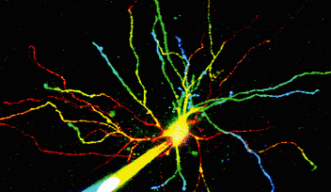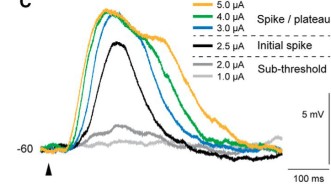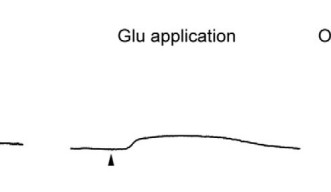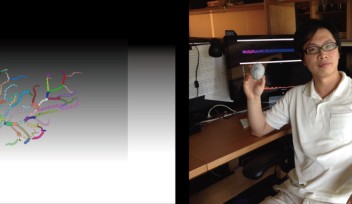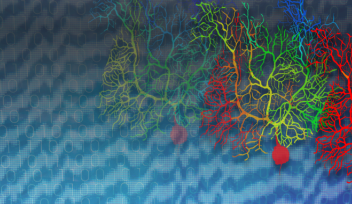To See or Not to See

The brain is a complicated network of small units called neurons, all working to carry information from the outside world, create an internal model, and generate a response. Neurons sense a signal through branching dendrites, carry this signal to the cell body, and send it onwards through a long axon to signal the next neuron. However, neurons can function in many different ways; some of which researchers are still exploring. Some signals that the dendrites receive do not continue to the next neuron; instead they seem to change the way that the neuron handles the subsequent signals. This could help neurons function as part of a large network, but researchers still have many questions. Dr. Sigita Augustinaite, a researcher in the Optical Neuroimaging Unit at the Okinawa Institute of Science and Technology Graduate University, suggested one mechanism explaining how neurons help the network function. Her findings, part of collaboration between the University of Oslo and OIST, were published August 13, 2014 as the cover article in The Journal of Neuroscience.
Dr. Augustinaite studies the visual pathway, where signals from the retina are sent to the visual cortex, where the brain interprets signals from the eye. Between the eye and the visual cortex, the signals must pass through the visual thalamus, that is, through thalamocortical, or TC neurons. These neurons can switch between a “sleeping” state and a “waking” state depending on input they receive from neurons and other brain areas. When an animal is awake, TC neurons transmit the incoming retinal signals on to the cortex, but when the animal is asleep, the neurons block retinal signals.
The visual cortex also sends a massive input back to TC neurons to control retinal signals traveling through the thalamus. But Dr. Augustinaite says that the suggested mechanisms of this control bring more questions than answers. To understand more, she conducted experiments in acute brain slices, small pieces of brain tissue where neurons stay alive and maintain their physiological properties. She added glutamate to dendrites far from the cell body to emulate a feedback signal from the visual cortex. Then she measured the neuron’s response, shown as a voltage difference between inside and outside of the membrane.
Dr. Augustinaite found that stimulating the neurons in this way depolarizes their membranes, creating something called NMDA spike/plateau potentials. If strong enough, depolarization can cause a neuron to fire an action potential, which travels through the axon to activate other neurons. Action potentials look like a sharp, one-millisecond increase in membrane voltage, and they transmit signals from retina to cortex. But if NMDA spike/plateaus induces action potentials, signals from the cortex and signals from the retina would be indistinguishable. With her experiments, Dr. Augustinaite showed that the NMDA spike/plateau potentials in TC neurons do not trigger action potentials. Instead, they lift the voltage of the membrane, changing the neuron’s properties for few hundred milliseconds, creating conditions for reliable signal transmission from retina to cortex.
“The research gives, for the first time, a clear view on what dendritic potentials are good for,” explained Prof. Bernd Kuhn, who leads the lab where Dr. Augustinaite works. “It points directly to the mechanism,” he concluded. Showing how dendritic plateaus function is just one important step toward understanding how neurons function as a network. “This mechanism could also be used in many other neuronal circuits, where one input regulates how another input moves through the network,” Dr. Augustinaite said. “This mechanism is an exciting logical element in the neuronal network, but just the start of putting the puzzle together.”
Specialties
Research Unit
For press enquiries:
Press Inquiry Form










